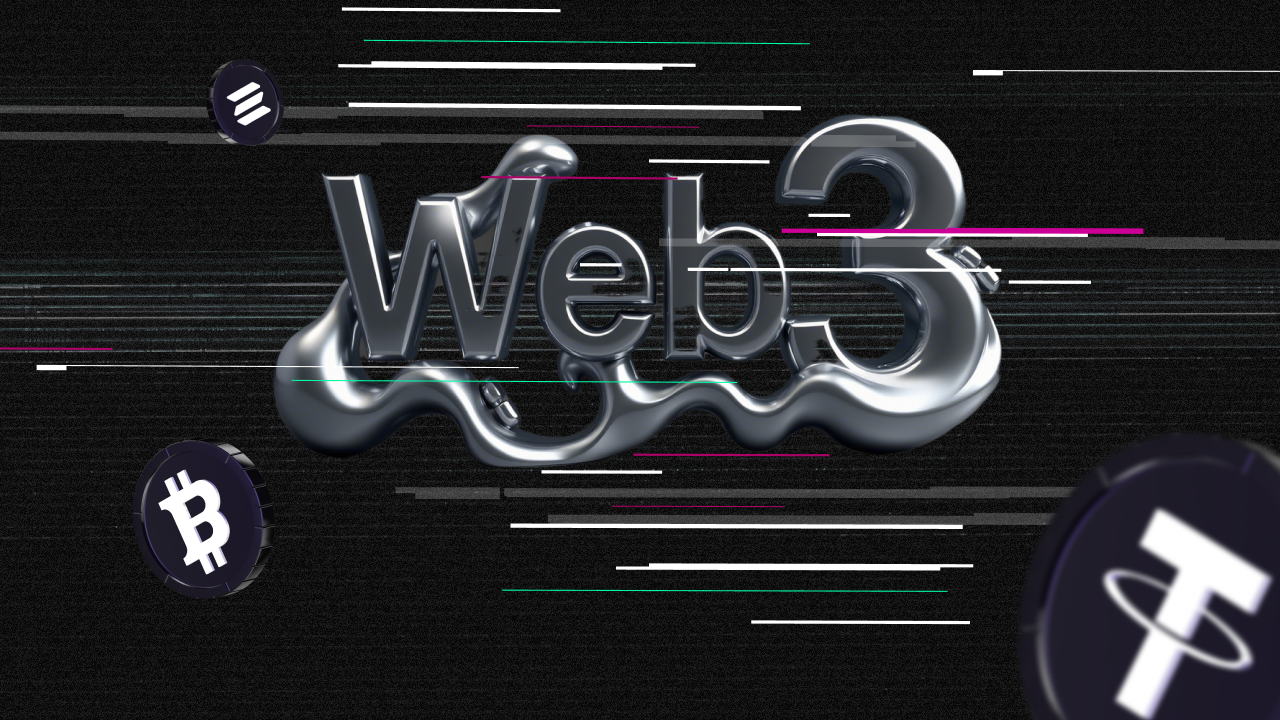Web3: The Road to a Decentralized Internet

A New Chapter in Digital Evolution
Web3 represents the next stage in the Internet’s evolution — one where users are no longer just consumers but actual owners of their data, assets, and digital identities. It redefines how we interact with technology and opens the door to a fairer, more decentralized digital economy.
In this article, we’ll explore what Web3 is and why its principles matter, especially for those building Web3 products or launching startups in this space.
What’s Behind the Term “Web3”?
Understanding Web3 helps to revisit previous phases of the Internet’s development briefly.
Web 1.0 was the age of static websites — a one-way flow of information. Web 2.0 introduced interactivity: users could create content, connect, and form digital communities. But despite this shift, data remained in the hands of centralized platforms.
Web3 changes that — offering a decentralized model. Users now control their data, actively participate in digital economies, and gain access to digital ownership through blockchain and tokens. This isn’t just a change in technical infrastructure — it’s a paradigm shift. Wallets and digital signatures replace passwords and logins. Centralized platforms give way to DAOs. Abstract trust is replaced with algorithmic transparency.
For Web3 founders, this is not just a theory — it’s a practical design framework that impacts everything from UX to monetization to community engagement.
Web3 Principles and Why They Matter
At the heart of Web3 lies a simple idea: control of the digital world should return to the people who build and use it.
Decentralization removes the need for intermediaries and allows value and decision-making to be shared across participants. Transparency is built into open blockchain networks. Participation no longer means just using a product — it includes ownership, governance, and co-creation.
Web3 introduces an open digital economy where every user can be a client, investor, contributor, or stakeholder. It’s a complete rewrite of the rules for those building digital products.
What Powers the Web3 Ecosystem?
Modern Web3 relies on several core technologies. First and foremost, blockchain is a distributed ledger where every participant in the network holds a copy of the transaction history. On top of this layer, smart contracts act as programmable rules that execute automatically when predefined conditions are met.
Another critical piece is cryptocurrency. In Web3, tokens aren’t just a means of payment — they’re used for governance, incentives, and participation. Instead of centralized accounts, users interact with dApps directly via wallets like MetaMask, offering higher levels of privacy and security.
Semantic analysis, AI moderation, metaverses, and 3D interfaces further enrich the ecosystem, contributing to more profound and adaptive user experiences.
How Web3 Products Work in Practice
Unlike traditional Web2 services, Web3 applications are decentralized by design. User data isn’t stored on centralized servers — it’s distributed across the network and secured through cryptography. This ensures both resilience and transparency.
Governance is often handled through DAOs (Decentralized Autonomous Organizations). Token holders vote on key decisions like feature development, treasury management, and strategic priorities. This is a powerful way for startups to align with their community and build absolute ownership.
Even at the MVP stage, teams must consider architecture carefully: which data should live on-chain vs. off-chain, how privacy is handled, which actions are tokenized, and how to design an effective incentive economy.
The Role of Tokens in the Web3 Economy
A token is more than just a digital currency. It’s a multifunctional tool that combines access, governance, incentives, and value exchange.
Tokens can be used to pay for services, vote on proposals, and reward users for their contributions. In a DAO, a token becomes your voting power, giving you a direct say in the platform's future.
This model creates alignment between users and builders: everyone has a stake in the ecosystem’s success.
For Web3 teams, designing smart tokenomics is critical. You must define supply, distribution, unlock schedules, and retention incentives. Poor token models can lead to speculation, imbalance, and user churn.
Web3 Is Already Here and It’s Growing Fast
We already see dozens of successful Web3 use cases: DeFi protocols, NFT marketplaces, DAO platforms, game economies, and user-owned social networks. The Web3 infrastructure is growing rapidly, and there is demand for decentralized applications.
For founders, this means the window of opportunity is wide open. The sooner you build in the Web3 paradigm, the greater your chances of gaining traction in this emerging ecosystem.
Final Thoughts
Web3 isn’t just a buzzword — it’s a new digital logic. It envisions a world where users become owners, communities govern platforms, and transparency and automation replace manual control. For Web3 founders, this is an opportunity to build not just a product, but an ecosystem where value is created alongside users, not above them.
If you're preparing to launch, scale, or raise funds, the Cware Labs team supports you from idea to growth. We work with Web3 startups around the world and understand what works. Let’s talk.
Follow Cware Academy for upcoming articles — we’re building a practical, structured knowledge base tailored to the needs of Web3 founders.
